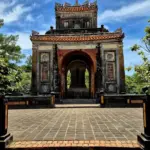History and Significance of Ngo Mon Gate in Hue Citadel by Ovuigo
Ngo Mon Gate, also known as the Meridian Gate, is the main entrance to the Imperial City (Dai Noi) within the Hue Citadel, located in Hue, Vietnam. Built in 1833 during the reign of Emperor Minh Mang of the Nguyen dynasty, Ngo Mon Gate stands as the embodiment of Vietnamese royal heritage. This gate not only served as the primary threshold into the heart of the Nguyen Emperors’ royal domain but also became a lasting symbol of power, tradition, and history in the ancient citadel.
The history of Ngo Mon Gate is deeply woven into the cultural fabric of the Nguyen dynasty, which ruled Vietnam from 1802 to 1945. Designed as both a defensive structure and a statement of royal grandeur, Ngo Mon has witnessed significant historical events, including royal ceremonies and political proclamations. Its enduring value speaks to the resilience of Vietnamese heritage, even as war and weather have challenged its structure through the centuries. The Nguyen dynasty used the gate to demonstrate imperial authority and control over both citizens and visiting dignitaries. Today, Ngo Mon Gate remains one of the most iconic landmarks in Hue, drawing travelers, historians, and photographers eager to connect with the grandeur of Vietnam’s royal past.
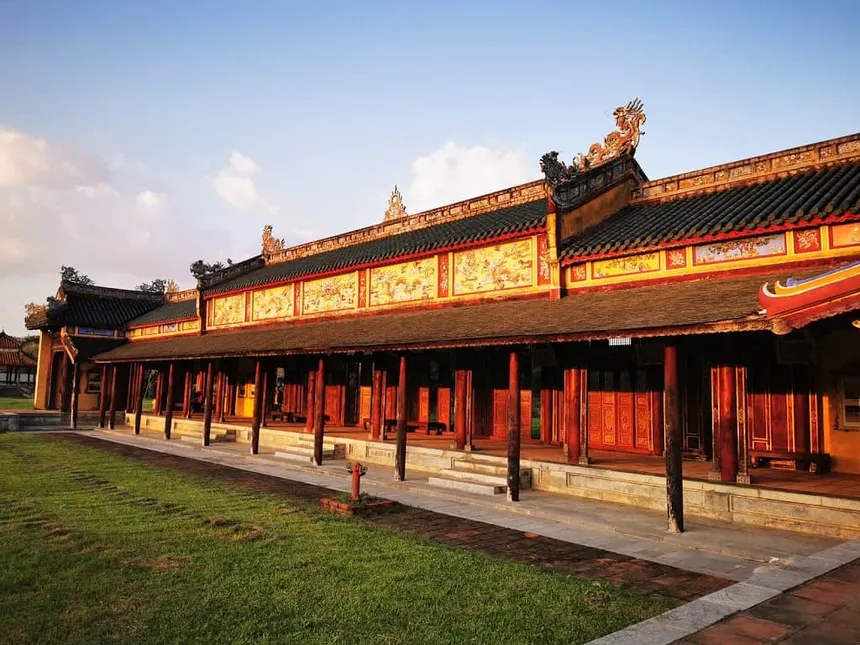
Architectural Features and Design Elements of Ngo Mon Gate
The architectural features of Ngo Mon Gate reflect the height of traditional Vietnamese royal design. This gate comprises five discrete entrances, each serving a specific function. The central pathway, reserved exclusively for the emperor, is flanked by two slightly smaller gates for mandarins and courtiers, while the outermost entrances allowed access for soldiers and servants. Above these gates, a grand balcony—known as the “Nguyen Throne Pavilion”—sits atop stone walls, providing the emperor a vantage point to observe grand processions or royal audiences.
Decorative motifs dominate every surface of the gate, with dragons, phoenixes, lotus flowers, and imperial seals symbolizing power and divine authority. The roof is crowned with intricate carvings, capped by imperial yellow tiles evoking prestige and the Nguyen dynasty flag’s vibrant colors. The gate faces directly south, aligning with the principles of geomancy and Vietnamese beliefs about prosperity and cosmic order. These artistic and functional features offer a living lesson in royal architecture, making Ngo Mon Gate a compelling destination for architecture enthusiasts and cultural explorers alike.
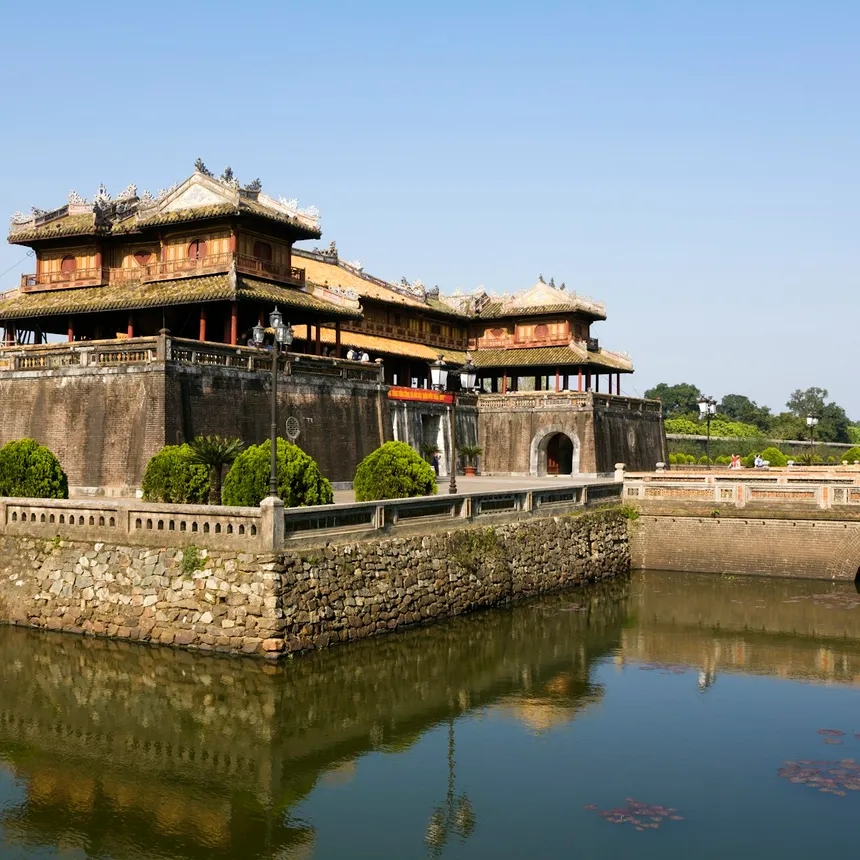
Role of Ngo Mon Gate in Royal Ceremonies and Nguyen Dynasty Power by Ovuigo
During the Nguyen dynasty, Ngo Mon Gate was much more than an entry point; it was the ceremonial axis of dynastic power. Only the emperor, carried by a golden palanquin and attended by royal guards, could pass through the central King’s Gate, reflecting the stratified hierarchy of the royal court. Grand state occasions, such as coronations, military reviews, and the formal declaration of holidays, took place here, with the emperor overseeing proceedings from the elevated balcony.
Each event at Ngo Mon Gate underscored the symbolic might of the Nguyen dynasty. The gate thus became an emblem of royal legitimacy, authority, and continuity, attracting loyal subjects eager for a glimpse of their ruler and international envoys seeking to witness the unique blend of vibrant ritual and political power. Even today, the gate is a poignant reminder of Hue’s role as the seat of Vietnam’s last feudal dynasty and the living traditions that defined its grandeur.
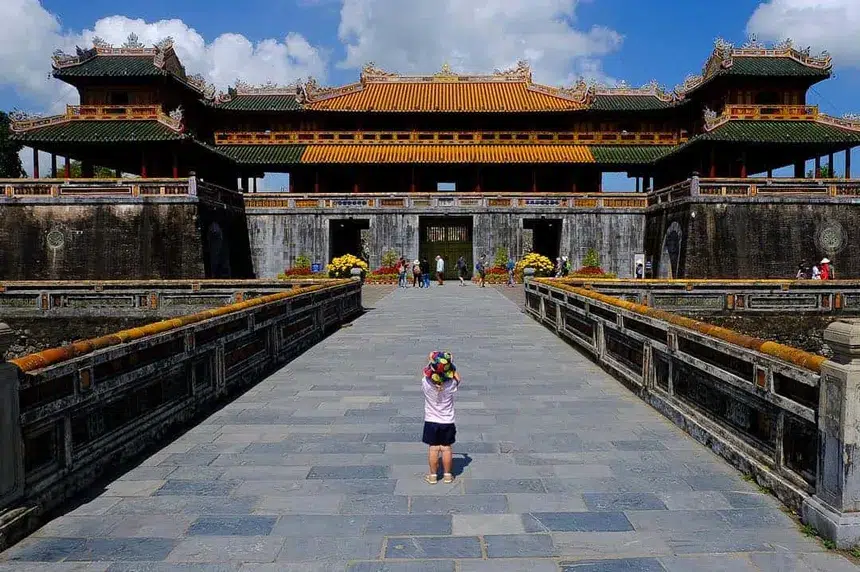
Ngo Mon Gate within the Hue Monuments Complex and UNESCO Heritage
Ngo Mon Gate forms the grand entrance to the Hue Citadel, itself the heart of the larger Hue Monuments Complex—a UNESCO World Heritage Site. Beyond its role as gateway to the Imperial City, Ngo Mon stands in close proximity to other key structures, such as the Thai Hoa Palace, where the emperor held court, and the Forbidden Purple City, once reserved for imperial family members. Together, these structures create a seamless narrative of royal life, ceremony, and governance during the Nguyen dynasty.
As part of the UNESCO-listed Hue Monuments Complex, Ngo Mon Gate has benefited from international conservation efforts, ensuring its status as a preserved heritage site. This focus on cultural preservation means visitors can experience the splendor of the Nguyen emperors in an environment that honors both original craftsmanship and the stories that shaped Vietnam’s national identity. Heritage status also draws ongoing interest from historians, architects, and travelers seeking a deeper connection to Vietnam’s illustrious royal past.
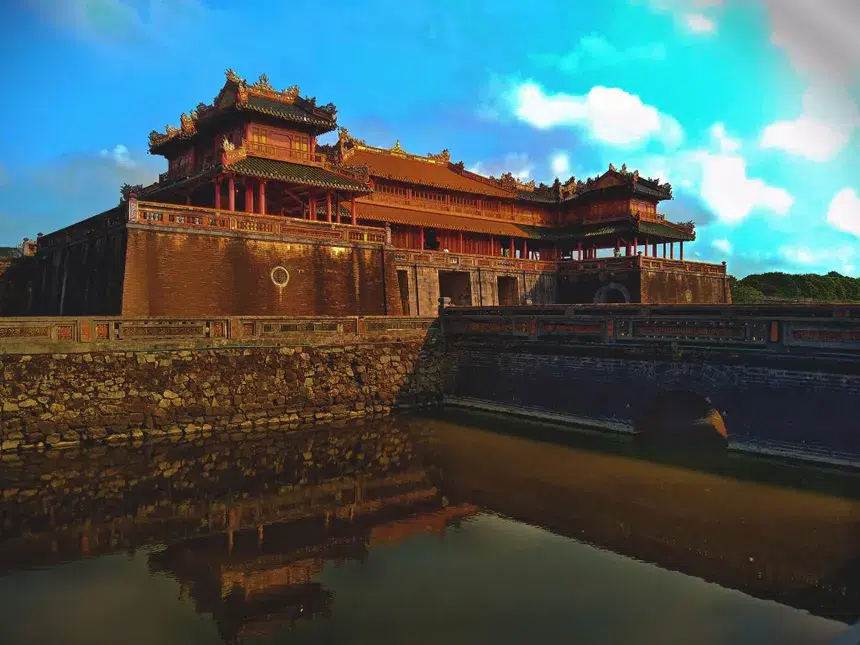
Visiting Ngo Mon Gate: Hours, Ticket Prices, and Travel Tips with Ovuigo
Touring Ngo Mon Gate is a highlight of any trip to Hue. The gate is open daily from 7:00 AM to 5:00 PM. As the main entry point to the Imperial City, visitors must purchase an entrance ticket. As of 2024, the ticket price is 200,000 VND for adults and 40,000 VND for children. Tickets include access to a range of sites within the Imperial City, including Ngo Mon Gate, the Thai Hoa Palace, and the Forbidden Purple City.
The site is accessible by walking, bicycle, or taxi from central Hue. Expect higher visitation during weekends and national holidays. For a smoother visit, arrive early to avoid crowds and the midday heat. Accessibility improvements have made the site friendlier for international and Vietnamese tourists alike, with English-language signage and guided tours available through reputable sources like ovuigo. Always bring water, sun protection, and a camera to capture the experience.
Location on map: View Ngo Mon Gate on Google Maps
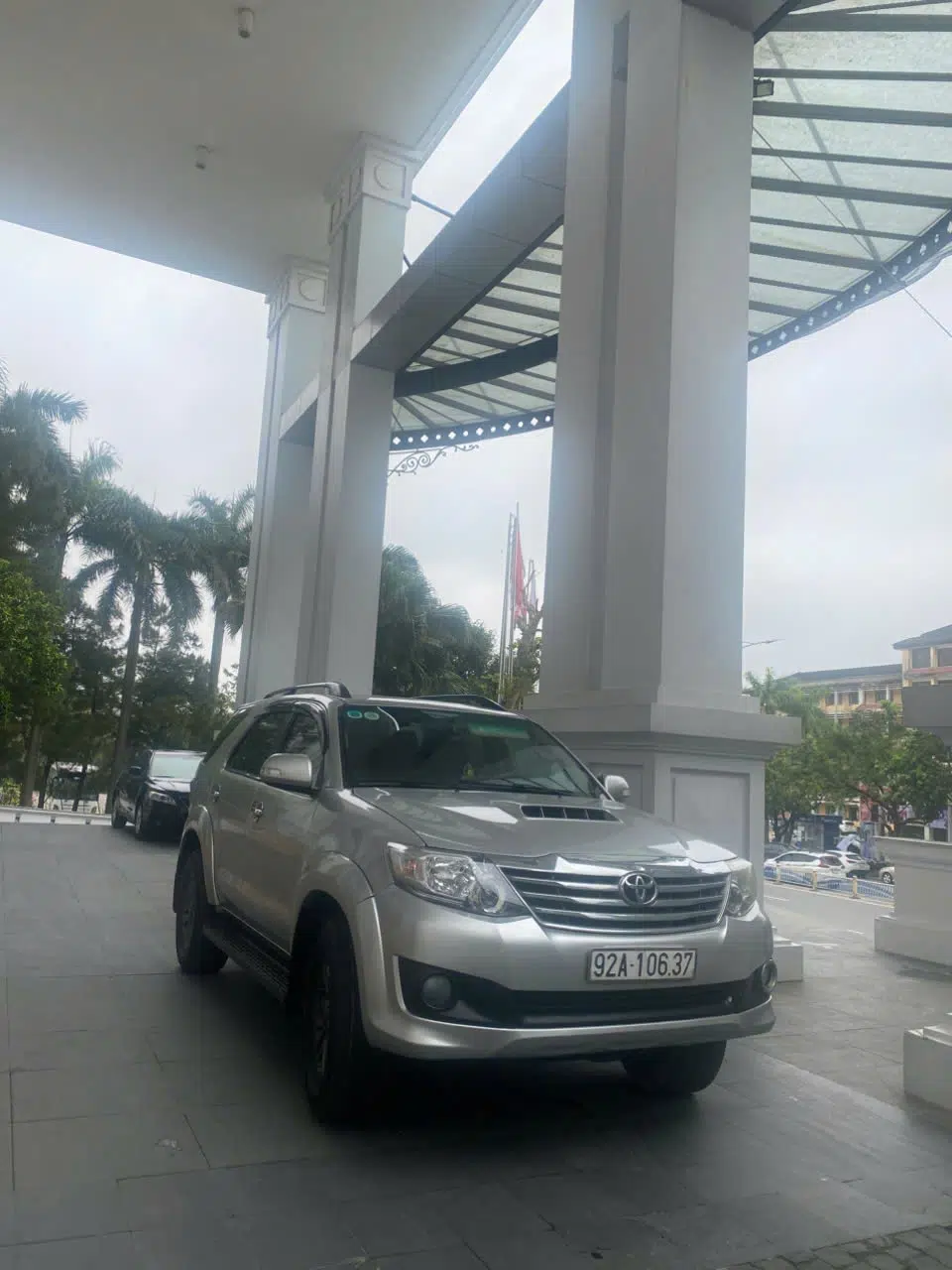
Photography and Symbolism: Capturing the Essence of Ngo Mon Gate
Ngo Mon Gate presents countless opportunities for remarkable photography. Morning and late afternoon provide the best light for capturing the gate’s vibrant colors and elaborate carvings. Evening shots at Ngo Mon Gate reveal its illuminated splendor, making night photography especially popular among visitors. Key spots include the central approach with the Flag Tower in view or from the courtyard, highlighting the five-entrance facade and ornate balconied roof.
The symbols that adorn Ngo Mon Gate—from dragons (strength and royal virtue), phoenixes (renewal), imperial seals (legitimacy), to lotus flowers (purity)—invite deeper exploration of Vietnamese royal culture. Each motif tells a story about the ideals and aspirations of the Nguyen dynasty. When photographing, focus on these symbolic details to create images that resonate beyond mere snapshots, offering insight into a culture rich with meaning and artistry.
**We don’t run tours — we craft experiences. Each journey is a story written just for you, designed for those who wish to explore Vietnam slowly, deeply, and meaningfully. No fixed itineraries. No crowds. Just you — and the moments that truly matter. *Chat now on Whatsapp +84868319161* for your private Hue experience.**
When planning your stay in central Vietnam, consider unique accommodations such as The Manor Hoi An, Hola 1, and Hola 2 for a memorable, relaxing visit.

